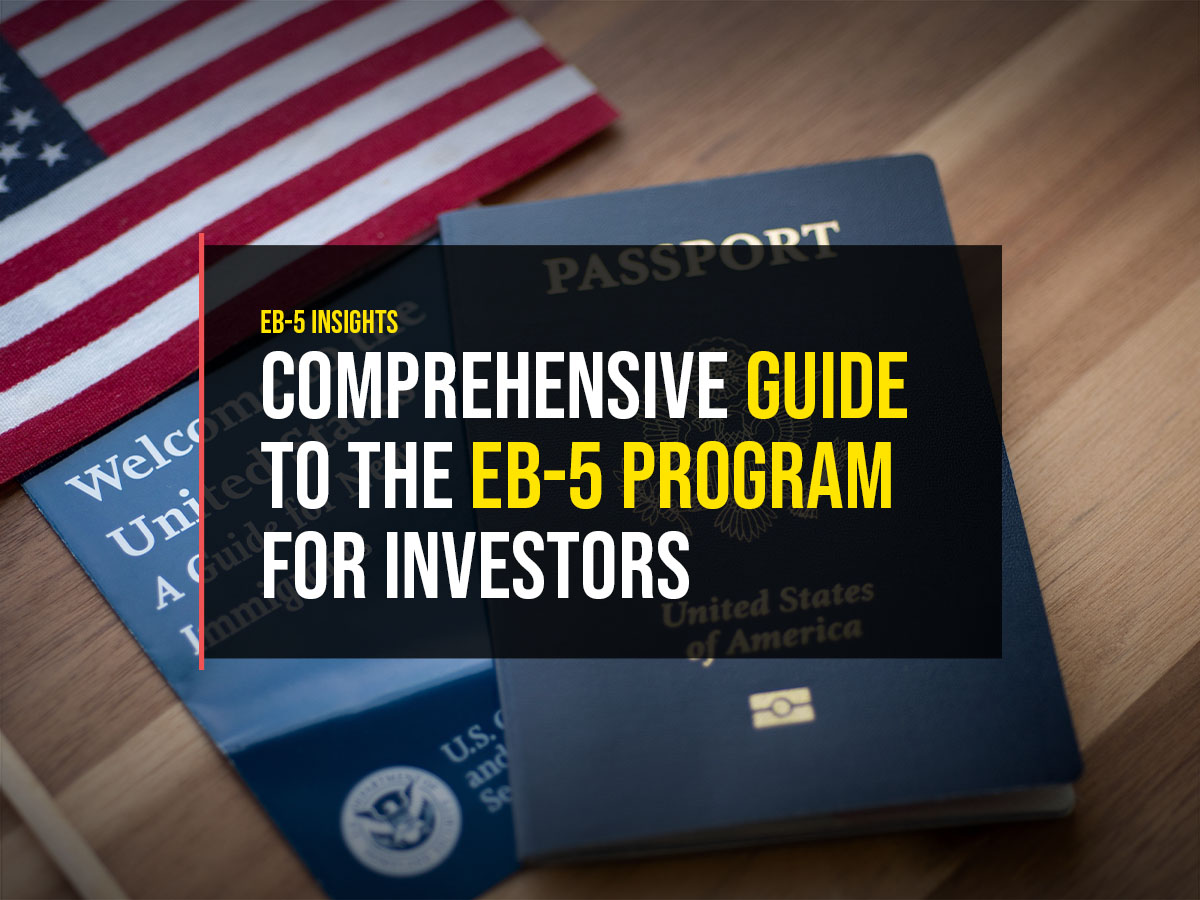
Comprehensive Guide to the EB-5 Program for Investors
The EB-5 Immigrant Investor Program offers a unique and expedited pathway to permanent residency in the United States (a green card) for foreign investors and their immediate, eligible family members. Since it was established in 1990, the program has been a popular option for those looking to secure a future for themselves and their loved ones in the United States. This guide to EB-5 aims to provide a thorough understanding of the EB-5 program, including eligibility requirements, investment guidelines, benefits, potential risks, and the application process.
What is the EB-5 Visa Program?
The EB-5 Visa Program was established by the U.S. Congress 35 years ago to encourage foreign investment in American businesses, create jobs, and stimulate economic growth across the country. Eligible foreign investors can secure permanent residency by investing in an American business that creates jobs.
The primary requirement of the program is that applicants make a qualifying investment that leads to the creation of at least 10 full-time jobs for American workers. In return, after a sustainment period for the investment, investors, their spouses and children under the age of 21, are eligible for the return of their investment and permanent resident status in the United States.
Eligibility Requirements for EB-5 Investors
- Investment:
- $1.05 million or reduced to $800,000 if the investment is made in a targeted employment area (TEA).
- Job Creation:
- The investment must create at least 10 full-time jobs for U.S. workers, which can be direct or indirect (depending on the type of investment)*.
- At-Risk Capital:
- The investment must be “at risk,” meaning that while many projects do end with the return of capital for an investor, such as the $1.4 billion CMB has returned to its investors, there is no guarantee on return of principal and the investor’s funds must face the risk of loss.
The EB-5 Journey
The EB-5 process is a multi-step journey that can lead to permanent residency in the United States. While the process will include nuances specific to each investor’s personal situation, below is an outline of the typical process:
- Step 1: Choose a Qualifying Project: Investors can choose from a few different types of investment, or approach to EB-5:
- Direct Investment: Investors directly invest in a U.S. business and take an active role in the management and operations of the enterprise
- Regional Center Investment: Investors can join a partnership as limited partners in a pooled investment made through a United States Citizenship and Immigration Services (USCIS)-approved Regional Center, which manages the investment and offers a more passive role for investors.
- Step 2: File a Petition for Conditional Residency in the United States (Form I-526E)
- Once a qualifying investment is made, the investor files Form I-526E with USCIS.
- An I-526E is a petition that demonstrates the investor has met the EB-5 investment requirements, including amount of at-risk capital, job creation, and source of investment funds.
- Note: I-526E petitions cannot be adjudicated until Form I-956F is approved for the project. While I-956F approval timelines vary, CMB has been able to consistently bring projects to market that are already I-956F approved, thanks to the rigorous underwriting criteria we apply to our investment opportunities.
- Step 3: Conditional Green Card is Issued
- If USCIS approves the I-526E petition, the investor, their spouse, and eligible children under 21 will receive conditional green cards that are valid for two years.
- These conditional green cards grant the investor and their family members the right to live, work, and study anywhere in the United States, during the conditional period.
- Step 4: File a Petition to Remove Conditions from Green Card (Form I-829)
- Within 90 days before the two-year anniversary of receiving a conditional green card, the investor must file Form I-829 to demonstrate that the investment has indeed met all requirements of the EB-5 program, including job creation and at-risk capital. Upon approval of the I-829 by USCIS, the conditions are removed from the investor’s green card and the investor and their eligible family members are granted permanent residency privileges for the United States.
- Step 5 (Optional): Apply for full citizenship by naturalization
- After five years of lawful permanent residence, EB-5 investors can apply for full citizenship by naturalization. While permanent residency grants many of the same benefits of citizenship, full citizenship brings unique benefits such as voting rights, sponsorship of parents and adult married children of citizens to join them in the United States, and deportation immunity.
Risks Involved in EB-5
- Investment Risk: As an investment-based program, capital must be at-risk, potentially resulting in a loss of the investment, if the project does not perform as expected. This highlights the importance of Regional Center and project selection. CMB, for example, is proud to have returned over $1.4 billion to investors as a result of project success.
- Processing Delays: While delays in the processing of I-526E and I-829 petitions can prolong the time it takes to get a green card, EB-5 remains the most expedited path to permanent residency in the United States that is currently available.
- Changes in Immigration Law: The EB-5 program has been subject to legislative changes over the years. While EB-5 investors who invest prior to September 30, 2026 are protected by the current law (via a “grandfathering” provision) and cannot be denied due to a termination or revamp of the EB-5 program, the Trump Administration’s announcement of a Gold Card donation-based immigration program highlights the reality that changes may be coming, and a price increase is almost certainly imminent.
- Regional Center Risks: If investing through a Regional Center, it’s important to choose based on a strong track record of integrity, project success, and investor satisfaction. Due diligence is critical when selecting a Regional Center partner to manage an EB-5 investment.
How to Choose the Right Regional Center
Choosing the right investment and, for most EB-5 candidates, the right Regional Center is crucial for success. When evaluating options, EB-5 applicants should consider:
- Reputation of the Regional Center: Research the track record of the regional center, looking for a solid history of successful projects, green card approvals, and compliance with program regulations.
- Business Plan & Financials: Assess the business plan, job creation strategy and measurement methodology, and financial projections to ensure they align with EB-5 requirements.
- Risk Mitigation: Consider the factors associated with the project, including the type (i.e., logistics, commercial real estate, etc.), relevant market factors, and the Regional Center’s track record with similar projects.
Ready to get started on your own journey toward permanent residency in the United States? Contact us today. As one of the most experienced and successful Regional Centers in the industry, CMB Regional Centers has helped more than 6,500 families in their pursuit of permanent residency in the Untied States and returned more than $1.4 billion to investors.
*may be model-derived

